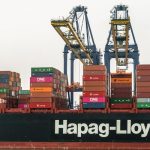Asian spot liquefied natural gas (LNG) prices hit their lowest level in over four months this week on strong inventories and weak demand despite supply concerns as more tankers avoid the Red Sea, following attacks launched by Yemen’s Houthi group on commercial ships.
The average LNG price for February delivery into Northeast Asia LNG-AS fell 6% to $11.9 per million British thermal units (mmBtu), its lowest level since August 13, industry sources estimated.
“North Asian players are slowly making an appearance, cold weather coupled with lower prices are making sense for utilities who have had a welcome winter reprieve from the spot market,” said Toby Copson, head of energy, APAC, at commodities broker Marex.
Several LNG vessels have changed their courses in recent days to avoid the Red Sea region amid maritime attacks by Yemen’s Iran-aligned Houthis on the world’s main East-West trade route.
“We’ve seen at least eight patent diversions by laden LNG carriers originating in the Atlantic and empty vessels returning from delivery east of Suez,” said Samuel Good, head of LNG pricing at commodity pricing agency Argus.
“The ability to sail via the Cape of Good Hope from the United States to Asia means there is little longer-term disruption. This route, though slightly longer than sailing US-Asia via Suez, does not carry canal fees, largely wiping the differential to charterers,” he said.
Russia’s Novatek NVTK.MM has sent force majeure notifications to some of its clients over future supplies from its Arctic LNG 2 project after the United States last month imposed sanctions.
The project, which was due to start production before the end of this year or in early 2024, is now expected at no earlier than Q2-2024.
However, weak demand, mild weather and healthy inventories in both Asia and Europe remain the key drivers for the market.
“Considering the challenges of the last few years, the global gas market is looking surprisingly comfortable ahead of the holiday season. A lot of the risk premium has come out of the remaining part of winter,” said Alex Froley, LNG analyst at data intelligence firm ICIS.
“However, this has all come at a cost: European householders faced higher bills, while major industrial users cut back or shut down permanently. Asian countries suffered power shortages and missed an opportunity to cut back on coal And month-ahead gas prices even now are still 1.5 times the long-run average before the crisis,” Froley said.
In Europe, gas prices eased ahead of the Christmas holidays and as weather forecasts indicated milder temperatures will persist into January.
S&P Global Commodity Insights assessed its daily northwest Europe LNG Marker (NWM) price benchmark for cargoes delivered in February on an ex-ship (DES) basis at $10.404/mmBtu on Dec. 21, a $0.77/mmBtu discount to the February gas price at the Dutch TTF hub.
Argus assessed the price at $10.350/mmBtu, while Spark Commodities assessed it at $10.206/mmBtu.
Spot LNG freight rates fell sharply this week, with the Atlantic rates hitting a 28% week-on-week decline to $96,500/day on Friday, while the Pacific rate hitting a 26% w-o-w decline to $76,500/day, said Qasim Afghan, an analyst at Spark Commodities.
Source: Hellenic Shipping News






